-
 Bitcoin
Bitcoin $105,953.9980
3.06% -
 Ethereum
Ethereum $2,445.3292
6.68% -
 Tether USDt
Tether USDt $1.0006
-0.03% -
 XRP
XRP $2.1968
7.03% -
 BNB
BNB $643.2903
2.13% -
 Solana
Solana $144.2799
3.82% -
 USDC
USDC $1.0000
-0.03% -
 TRON
TRON $0.2739
0.49% -
 Dogecoin
Dogecoin $0.1642
4.47% -
 Cardano
Cardano $0.5834
5.49% -
 Hyperliquid
Hyperliquid $38.0741
2.80% -
 Sui
Sui $2.7741
7.56% -
 Chainlink
Chainlink $13.4107
11.26% -
 Bitcoin Cash
Bitcoin Cash $450.4828
-0.61% -
 UNUS SED LEO
UNUS SED LEO $9.1301
0.64% -
 Stellar
Stellar $0.2476
5.49% -
 Avalanche
Avalanche $18.0637
5.09% -
 Toncoin
Toncoin $2.9066
2.43% -
 Shiba Inu
Shiba Inu $0.0...01160
4.01% -
 Hedera
Hedera $0.1527
8.00% -
 Litecoin
Litecoin $84.6122
2.37% -
 Monero
Monero $317.6076
5.76% -
 Ethena USDe
Ethena USDe $1.0008
0.02% -
 Polkadot
Polkadot $3.4519
5.27% -
 Dai
Dai $1.0000
-0.03% -
 Bitget Token
Bitget Token $4.2835
5.62% -
 Uniswap
Uniswap $7.0443
9.78% -
 Pepe
Pepe $0.0...09964
7.41% -
 Pi
Pi $0.5391
4.64% -
 Aave
Aave $264.1743
11.26%
What does the divergence between the volatility indicator and the price indicate?
A divergence between price and volatility may signal a potential trend reversal or weakening momentum in crypto markets.
Jun 25, 2025 at 06:07 am

Understanding the Volatility Indicator
The volatility indicator is a technical analysis tool used to measure the rate and magnitude of price movements in financial markets, including cryptocurrencies. It helps traders assess whether a market is experiencing high or low volatility, which can influence trading decisions. Common types of volatility indicators include Bollinger Bands, Average True Range (ATR), and Volatility Index (VIX). In crypto trading, where price swings are frequent, understanding this metric is crucial.
When analyzing charts, traders often compare the volatility indicator with actual price action to detect potential discrepancies known as divergences. A divergence occurs when the direction of the price trend does not align with the direction of the indicator. This mismatch may signal an upcoming reversal or continuation pattern.
Identifying Divergence Between Price and Volatility
To spot divergence between price and volatility, traders should observe whether both are moving in the same direction or not. For instance:
- If the price makes a new high but the volatility indicator fails to reach a new peak, it indicates bearish divergence.
- Conversely, if the price records a new low while the volatility indicator doesn’t confirm it, it suggests bullish divergence.
This kind of analysis requires charting tools that allow overlaying the volatility indicator on the price chart. Traders must pay close attention to peaks and troughs in both the price and the volatility line. Properly identifying these patterns can offer early signals about weakening trends or potential reversals.
Bearish Divergence: Signs of Weakness
In a bearish divergence, the price climbs to higher highs while the volatility indicator shows lower highs. This implies that although the price is rising, the underlying momentum or market participation is decreasing. In cryptocurrency markets, this could indicate that buyers are losing control despite continued upward movement.
For example, during a rally in Bitcoin’s price, if the ATR starts to decline, it suggests that the average range of price movement is shrinking, indicating less aggressive buying. This discrepancy may foreshadow a pullback or even a reversal. Traders might interpret this as a warning sign to take profits or prepare for a downtrend.
Bullish Divergence: Hidden Strength
A bullish divergence occurs when the price hits lower lows, but the volatility indicator forms higher lows. This scenario typically indicates that despite falling prices, the intensity of selling is diminishing. In crypto trading, this often precedes a potential bounce or trend reversal.
Consider Ethereum dropping to a new low while its Bollinger Band width begins to widen. The widening bands suggest increasing volatility, which could mean that sellers are exhausting themselves and buyers are starting to step in. This divergence might be an early clue that the downtrend is losing steam and a bullish move could follow.
How to Trade Using Volatility-Price Divergence
Trading divergence between price and the volatility indicator involves several steps:
- Confirm the divergence: Use candlestick charts and volatility overlays to visually verify the mismatch between price and volatility readings.
- Use additional confirmation tools: Incorporate oscillators like RSI or MACD to filter out false signals and increase confidence in the trade setup.
- Set entry points: Enter trades once the divergence is confirmed and the price begins to reverse direction.
- Place stop-loss orders: Protect against unexpected price surges by placing stop-loss orders beyond recent swing highs or lows.
- Monitor volume: Increasing volume during a reversal adds credibility to the divergence signal.
Each of these steps plays a vital role in executing a successful trade based on divergence. Misjudging the alignment or entering too early can lead to losses, especially in highly volatile crypto markets.
Common Pitfalls When Interpreting Divergence
Traders often fall into traps when interpreting divergence between the volatility indicator and price. One common mistake is assuming that divergence always leads to a reversal. However, markets can remain overbought or oversold for extended periods, particularly in strong trending environments.
Another pitfall is using only one indicator to determine divergence. Relying solely on the volatility metric without considering other aspects like volume, support/resistance levels, or broader market sentiment can result in misleading conclusions.
Additionally, some traders overlook the importance of time frames. A divergence visible on a 1-hour chart may not hold significance on a daily chart. Therefore, cross-checking across multiple time frames is essential before making a trade decision.
Frequently Asked Questions
Q: Can divergence occur in sideways markets?
Yes, divergence can appear even in ranging or sideways markets. It often highlights waning momentum within a consolidation phase, potentially signaling a breakout direction.
Q: Is divergence more reliable in certain cryptocurrencies?
Divergence works best in liquid and actively traded assets. Major cryptocurrencies like Bitcoin and Ethereum tend to show clearer divergence patterns due to higher trading volumes and market participation.
Q: How often should I check for divergence?
It's advisable to review charts regularly, especially during key market events or major news releases. Checking at least once per trading session ensures timely identification of developing patterns.
Q: Does divergence guarantee a price reversal?
No, divergence does not guarantee a reversal. It merely signals a potential shift in momentum. Always use divergence in conjunction with other technical tools for better accuracy.
Disclaimer:info@kdj.com
The information provided is not trading advice. kdj.com does not assume any responsibility for any investments made based on the information provided in this article. Cryptocurrencies are highly volatile and it is highly recommended that you invest with caution after thorough research!
If you believe that the content used on this website infringes your copyright, please contact us immediately (info@kdj.com) and we will delete it promptly.
- Stablecoins, Blockchain Games, and NxtNexus: A Deep Dive
- 2025-06-25 10:25:13
- Children: Yesterday, Today, and Tomorrow's Promise
- 2025-06-25 10:45:13
- £1 Coin: Valuable Finds and Expert Tips for Collectors
- 2025-06-25 11:05:13
- £1 Coin, Mistake, Worth £500: Are You Sitting on a Goldmine?
- 2025-06-25 11:25:12
- Spot the Mistake: Is Your £1 Coin Worth £500?
- 2025-06-25 11:45:13
- XRP, Ripple, Legal Saga: Navigating Uncertainty with Stablecoin Strategies
- 2025-06-25 10:52:16
Related knowledge
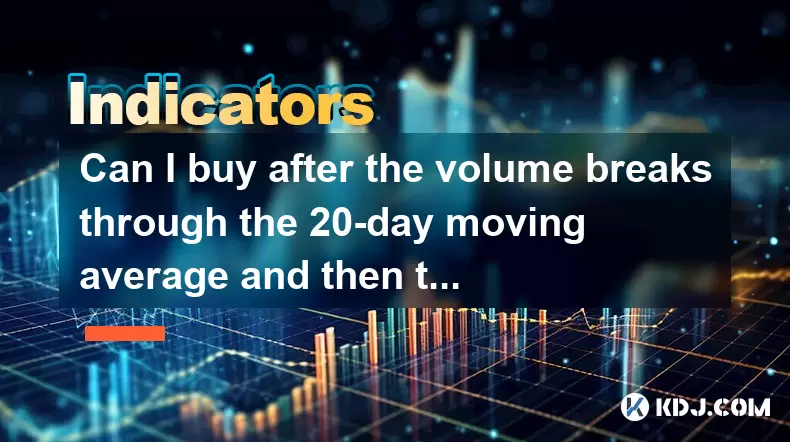
Can I buy after the volume breaks through the 20-day moving average and then the volume shrinks and then the callback is pulled back?
Jun 25,2025 at 12:00pm
Understanding Volume and Moving Averages in Cryptocurrency TradingIn the world of cryptocurrency trading, volume and moving averages are two critical indicators that traders rely on to make informed decisions. The 20-day moving average (MA) is a popular tool used to identify trends and potential entry or exit points. When volume breaks through this aver...
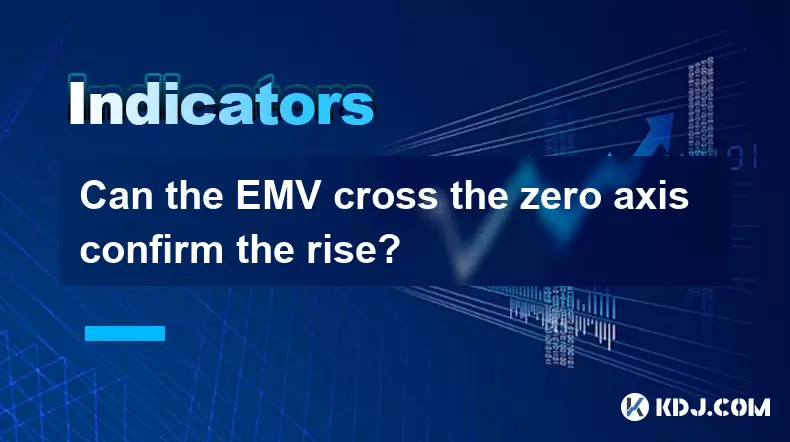
Can the EMV cross the zero axis confirm the rise?
Jun 25,2025 at 11:14am
Understanding the EMV Indicator in Cryptocurrency TradingThe Ease of Movement Value (EMV) is a technical analysis indicator commonly used by traders to assess the relationship between price and volume. In the cryptocurrency market, where volatility is high and trends can reverse quickly, understanding how to interpret EMV becomes crucial for making info...
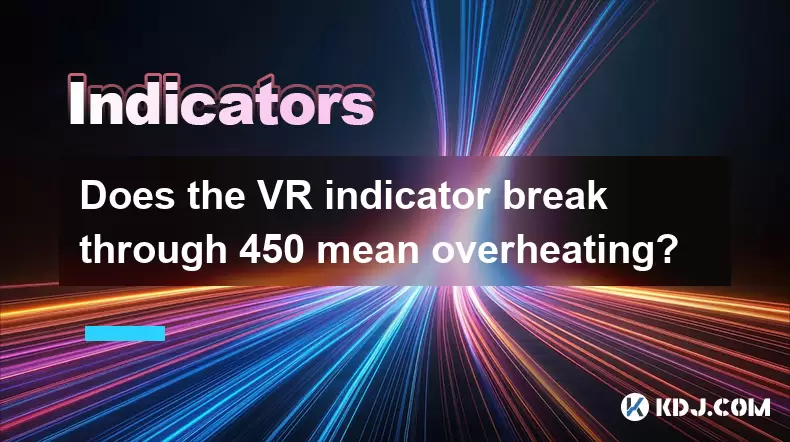
Does the VR indicator break through 450 mean overheating?
Jun 25,2025 at 10:15am
Understanding the VR Indicator in Cryptocurrency AnalysisThe VR indicator, or Volume Ratio, is a technical analysis tool used to assess buying and selling pressure by comparing the volume of up days to down days over a specified period. In cryptocurrency trading, where volatility is high and sentiment shifts rapidly, the VR indicator helps traders ident...

Should we exit the market when the TSI indicator forms a head and shoulders top pattern in the overbought zone?
Jun 25,2025 at 10:50am
Understanding the TSI Indicator and Its Relevance in Cryptocurrency TradingThe True Strength Index (TSI) is a momentum oscillator commonly used by traders to identify overbought or oversold conditions in financial markets, including cryptocurrencies. It is calculated using double smoothing of price changes, which helps filter out noise and provides more...
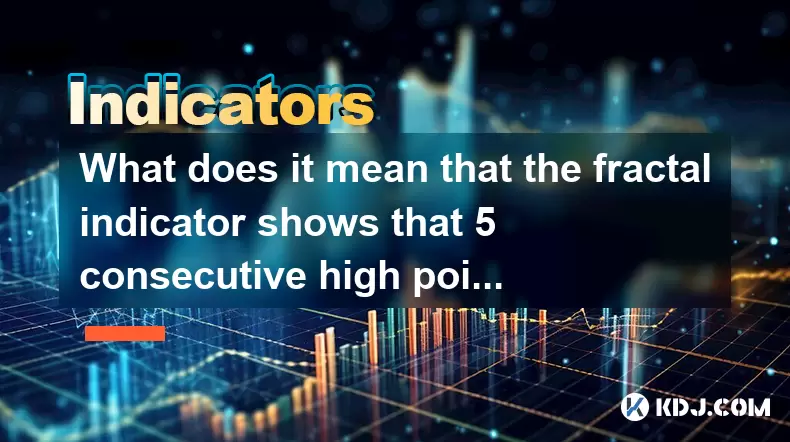
What does it mean that the fractal indicator shows that 5 consecutive high points are gradually rising?
Jun 25,2025 at 11:07am
Understanding the Fractal Indicator in Cryptocurrency TradingThe fractal indicator is a popular technical analysis tool used by traders in the cryptocurrency market to identify potential reversal points in price action. It is based on a mathematical concept known as fractals, which are repeating patterns that occur across different time frames. In tradi...
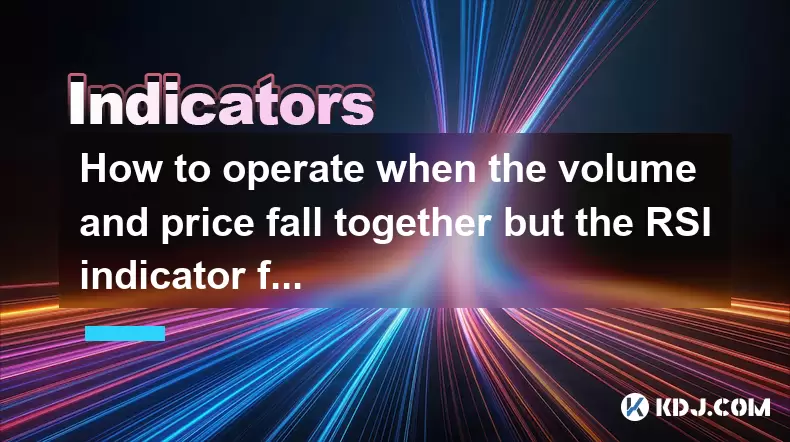
How to operate when the volume and price fall together but the RSI indicator forms a bottom divergence?
Jun 25,2025 at 04:29am
Understanding the Concept of RSI Bottom DivergenceWhen analyzing cryptocurrency price charts, traders often rely on technical indicators to spot potential reversals. One such signal is a bottom divergence in the Relative Strength Index (RSI). This occurs when the price makes a new low, but the RSI does not confirm that low and instead forms a higher low...

Can I buy after the volume breaks through the 20-day moving average and then the volume shrinks and then the callback is pulled back?
Jun 25,2025 at 12:00pm
Understanding Volume and Moving Averages in Cryptocurrency TradingIn the world of cryptocurrency trading, volume and moving averages are two critical indicators that traders rely on to make informed decisions. The 20-day moving average (MA) is a popular tool used to identify trends and potential entry or exit points. When volume breaks through this aver...

Can the EMV cross the zero axis confirm the rise?
Jun 25,2025 at 11:14am
Understanding the EMV Indicator in Cryptocurrency TradingThe Ease of Movement Value (EMV) is a technical analysis indicator commonly used by traders to assess the relationship between price and volume. In the cryptocurrency market, where volatility is high and trends can reverse quickly, understanding how to interpret EMV becomes crucial for making info...

Does the VR indicator break through 450 mean overheating?
Jun 25,2025 at 10:15am
Understanding the VR Indicator in Cryptocurrency AnalysisThe VR indicator, or Volume Ratio, is a technical analysis tool used to assess buying and selling pressure by comparing the volume of up days to down days over a specified period. In cryptocurrency trading, where volatility is high and sentiment shifts rapidly, the VR indicator helps traders ident...

Should we exit the market when the TSI indicator forms a head and shoulders top pattern in the overbought zone?
Jun 25,2025 at 10:50am
Understanding the TSI Indicator and Its Relevance in Cryptocurrency TradingThe True Strength Index (TSI) is a momentum oscillator commonly used by traders to identify overbought or oversold conditions in financial markets, including cryptocurrencies. It is calculated using double smoothing of price changes, which helps filter out noise and provides more...

What does it mean that the fractal indicator shows that 5 consecutive high points are gradually rising?
Jun 25,2025 at 11:07am
Understanding the Fractal Indicator in Cryptocurrency TradingThe fractal indicator is a popular technical analysis tool used by traders in the cryptocurrency market to identify potential reversal points in price action. It is based on a mathematical concept known as fractals, which are repeating patterns that occur across different time frames. In tradi...

How to operate when the volume and price fall together but the RSI indicator forms a bottom divergence?
Jun 25,2025 at 04:29am
Understanding the Concept of RSI Bottom DivergenceWhen analyzing cryptocurrency price charts, traders often rely on technical indicators to spot potential reversals. One such signal is a bottom divergence in the Relative Strength Index (RSI). This occurs when the price makes a new low, but the RSI does not confirm that low and instead forms a higher low...
See all articles
























































































